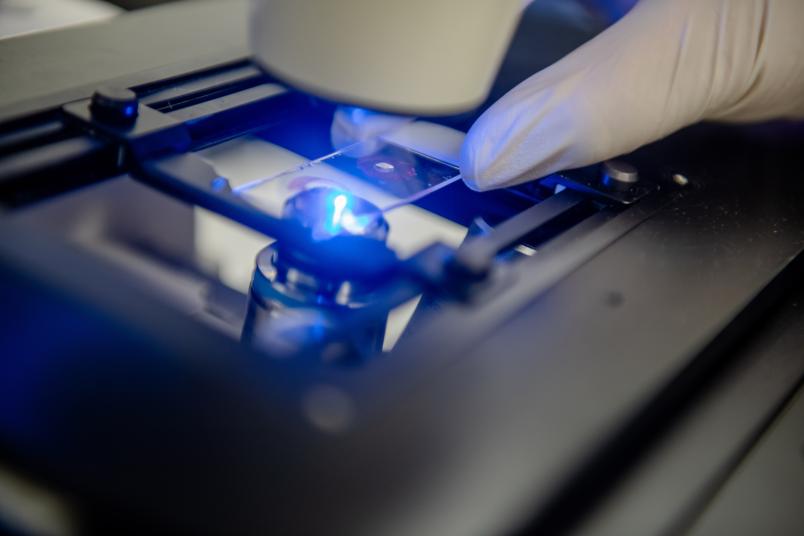Neurobiology The link between glaucoma, the immune system and protein tenascin-C
Glaucoma is a leading cause of blindness worldwide. An increased intraocular pressure is the main risk factor. But there are other triggers.
Researchers at Ruhr-Universität Bochum (RUB) have studied the role of the immune response in the development of glaucoma in mice. They showed that inflammatory processes are associated with the pathogenesis of the disease and that the extracellular matrix molecule tenascin-C plays a key role as a modulator of the immune response. Glaucoma is a common cause of blindness worldwide. Typically, intraocular pressure is increased in patients, but in around 40 per cent it stays in normal ranges. The results on the role of the immune response were published online on 9 October 2020 in the journal Frontiers in Immunology.
The collaborative study was carried out by Dr. Susanne Wiemann, Dr. Jacqueline Reinhard and Professor Andreas Faissner from the RUB Department of Cell Morphology and Molecular Neurobiology together with Dr. Sabrina Reinehr and Professor Stephanie Joachim from the Experimental Eye Research Institute at the University Eye Hospital in Bochum.
Tenascin-C affects the inflammatory immune response
The researchers studied mice that lacked tenascin-C and compared them with animals that exhibit this protein. In animals from both groups, they induced an autoimmune glaucoma, which is similar to glaucoma in humans.
In mice without tenascin-C, immune cells of the central nervous system, the microglia, behaved differently than in mice with tenascin-C. The cells were less reactive and released more anti-inflammatory factors. In animals with tenascin-C, however, the microglia secreted more pro-inflammatory factors.
Increased retinal cell death
The team also observed effects on retinal ganglion cells, which transmit visual information from the eye to the brain and typically die as a result of glaucomatous damage. In mice with tenascin-C, significantly more retinal ganglion cells died than in mice without tenascin-C. In contrast to mice with tenascin-C, the optic nerve remained intact in mice without tenascin-C.
The results suggest that tenascin-C plays a role in glaucoma by regulating inflammatory processes. “One day, this discovery could help in the early glaucoma diagnosis,” says Susanne Wiemann.

